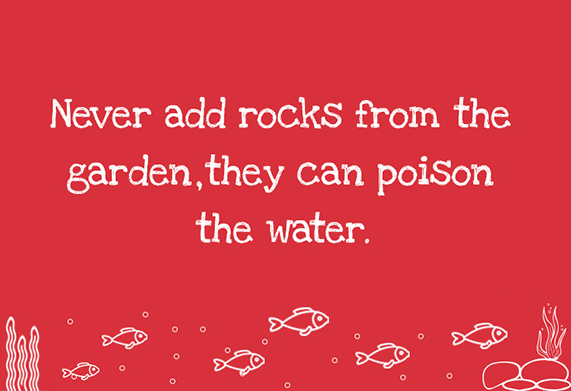Starting out with plants in a tropical aquarium
There are a wide variety of plants available for the aquarium; both live and plastic. Adding plants not only adds colour and interest to the aquascape but give the fish places to explore, hide and breed.
Whether you want to mimic the natural beauty of the ocean floor with live plants or create something more artistic with plastic ones, there are plenty of ways to incorporate plants into your fish tank.

Adding live plants to your tropical aquarium
Live plants can offer multiple benefits to your tropical aquarium. Not only do they give your aquarium a natural feel, but they also help to keep your aquarium healthy.
Plants play a key role in maintaining the quality of your aquarium’s water by absorbing carbon dioxide and releasing oxygen, which benefits your fish. Live plants can also help reduce algae growth by competing for nutrients in the water.
Choosing live plants for your aquarium
For beginners, select plant varieties that are aesthetically pleasing, easy to keep and that suit your aquarium set-up.
Choose plants that will not grow too large for your aquarium, or grow so quickly that they become unmanageable.
Growing aquarium plants can be a bit like learning to garden; a bit of trial and error is required to find what you can grow well.
See the list below of a few popular aquatic plants to start with in your aquarium, but get advice from your local aquatic store who can advise you on the plants they have available that will suit your set-up.
Echinodorus bleheri – Amazon Sword
Anubias barteri – Anubias
Microsorum pteropus – Java Fern
Hygrophila polysperma – Indian Waterweed
Sagittaria subulata – Dwarf Sagittaria

Adding plastic plants to your tropical aquarium
Choosing plastic plants can make caring for the aquarium a little easier, although you do not get the biological benefits to the aquatic environment that live plants offer. These artificial plants, and come in a range of shapes and sizes, from realistic interpretations of live plants to brightly coloured, fun shapes.
Another benefit of plastic plants is that they require no special maintenance, such as trimming or fertilization. They also do not need lighting or specific water conditions to thrive, making them a hassle-free option for those who may not have the time to care for live plants.
How to look after your aquarium plants
As with fish, for plants to thrive in your aquarium they need good water quality, food and the right conditions.
Carrying out all the recommended maintenance on your aquarium and caring for the water correctly will ensure good water quality for your fish and plants.
Aquascaping

Aquascaping
Take care to plan your aquarium planting (which is similar to creating a landscaped border in a garden), ensure that there is a variety of different height plants with the tallest at the back and shortest in the foreground.
Create clumps of plants with a variety of leaf colours, shapes and textures for best effect. It is always better to start off with too many plants and thin them out later, this helps ensure algae does not have any excess food or light to establish a foot hold in the aquarium.
Substrate & food
Substrate & food
Plants need food to live, grow and potentially flower. Some of this is available from the aquarium water, but they also take up other nutrients through their roots from the gravel they are planted in.
You can purchase gravel substrates specifically designed for aquarium plants to get their roots down and grow in.
You should also feed aquarium plants weekly with a proprietary aquarium plant food such as liquid aquarium plant food to provide them with the micronutrients missing from the water.

Lighting
Lighting
All plants need light to photosynthesize – the process that allows a plant to create its own energy.
Ensure your aquarium has good lighting specifically designed for encouraging plant growth such as Tri-Spec LED lighting which can be retro-fitted to an existing aquarium.
Use alongside a lighting timer for the plants to get a perfect day and night lighting balance.
LED lights are a popular choice due to their energy efficiency and long lifespan.
Trimming

Trimming
Trim back any dead leaves as you see them and any excess growth as required.
Remove dead plants and any spreading plant growth that has out-grown your requirements.
Make sure to use a good pair of aquascaping scissors to keep your plants tidy, avoid blunt scissors as they can crush your plants rather than cut them.


